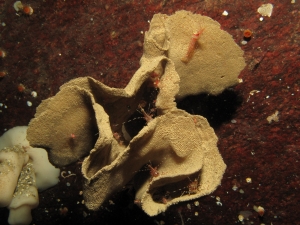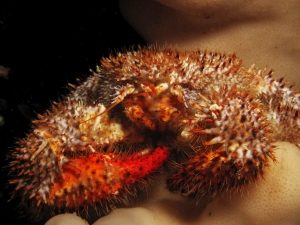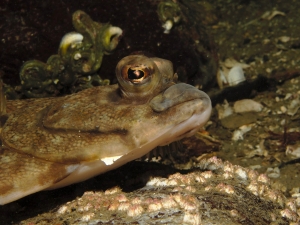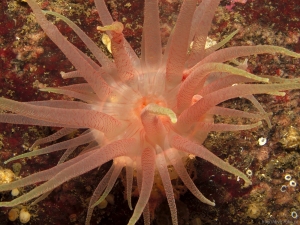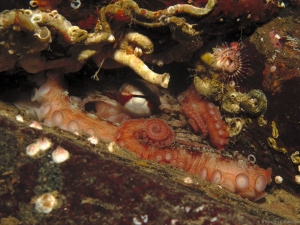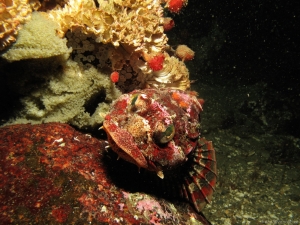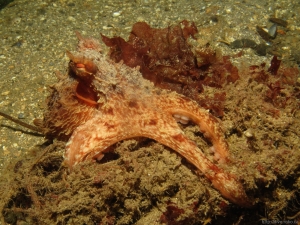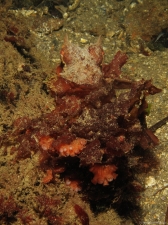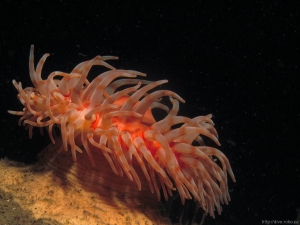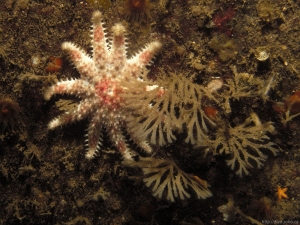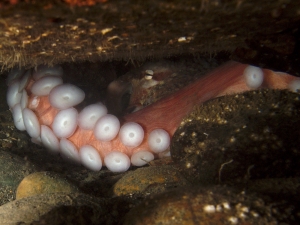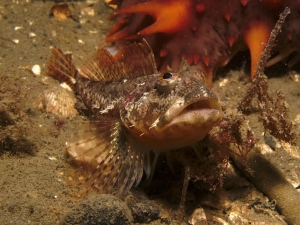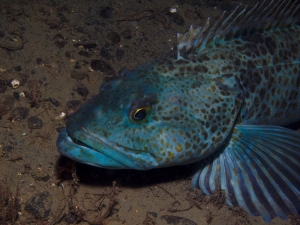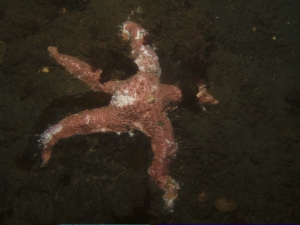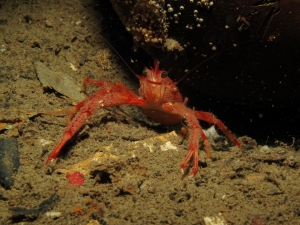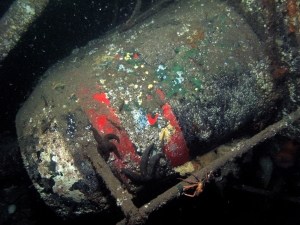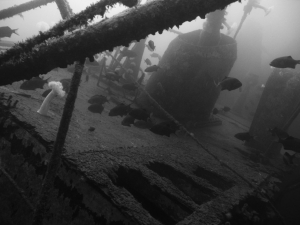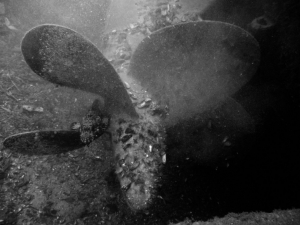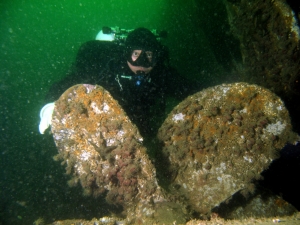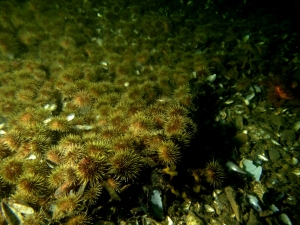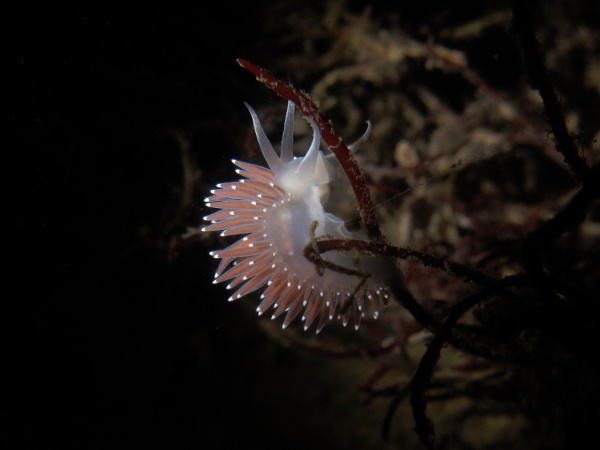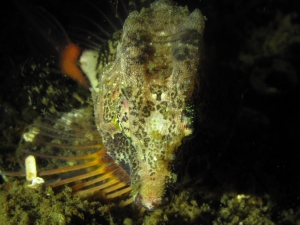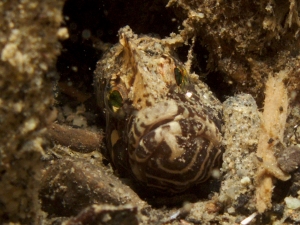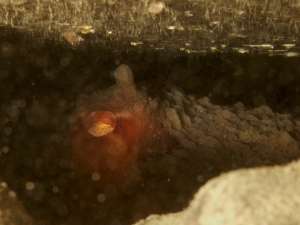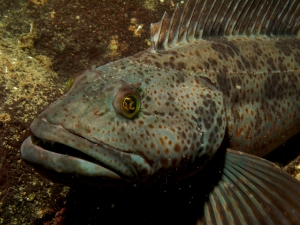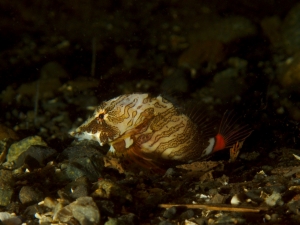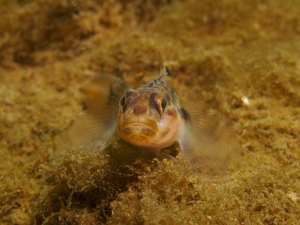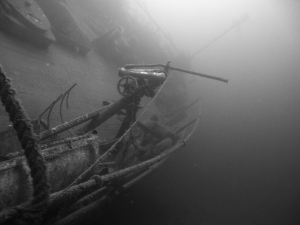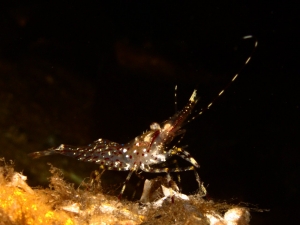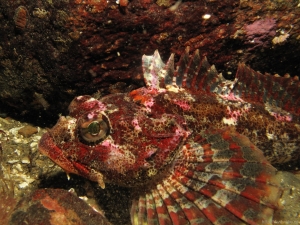Armed with a good tip for where to find a Pacific Spiny Lumpsucker, Josh and I drove out to Kelvin Grove for a dive. Unfortunately, the 4 “Visitor” spots were already taken. (The 10 stalls reserved for Lions Bay residents were all free, naturally. I maintain that all the locals I’ve met while diving there have been very friendly, and we respond by being courteous to the local residents. Unfortunately their town council wants to restrict non-resident access)
Both armed with doubles, we first swam out towards the wall, checking out the larger anemones and sponges that live along that feature, maxing out at a nice 30 meters — I fell the narc while trying to manoeuvre into position for a shot of a Hairy Spined Crab — Back-kicking with a loose bootie, watching my depth gauge, keeping my buoyancy, and trying to line up for a upwards shot (since he was hiding somewhat) proved to be an interesting level of task-loading today. After snapping a few shots, we ascended to a shallower depth. A cool thing about the Sponges is just how much life lives in and around the sponge themselves, usually various crustaceans.
After the wall, we swam back into the rock field, the spot I prefer at Furry Creek. At about 10-15 meters average depth are plenty of boulders, providing ample shelter for many different species of fish and other creatures. Again, there were plenty of Irish Lords guarding egg masses, as well as a really interestingly coloured and patterned Sculpin. Also in the area is the bottle-field, which has lots of interesting old bottles — No cool finds this time around.
One cool find was what I initially thought was some sort of Tunicate, but I couldn’t match it up in my book. However, it looks pretty spot on for Stubby Squid eggs! Looking up some more references, I’m fairly confident that’s what they are. I can’t wait to get back in after they hatch to try and find some baby squid, in less than 4-9 months… (Quite the long gestation)
We spent a large portion of the dive in the super-shallows — Where lots of overlooked little creatures tend to hide out. Although it was ridiculously cold, we ended up with a 110 minute dive time, a new personal record for both of us. The drive home treated us with some sun and nice skies, Howe Sound truly is an amazing place, we’re lucky to live here.
The full gallery is below. Again, a lot of photos here this time around. I struggled to narrow down to 4 highlight photos…

